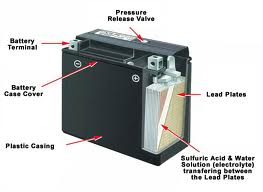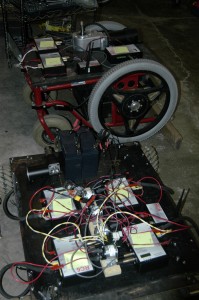by James David Smith | Apr 13, 2011 | Articles
The ABTT Theatre Show in London, England, is one of our favorite trade shows of the year. It showcases businesses, products and services, as well as educational and professional opportunities in the performing arts and entertainment industry. With a large array of exhibitors — including RC4 Wireless — the Theatre Show is a great place to learn about innovations and discuss future projects.
Contact us for more information about how to get your FREE PASS to this year’s ABTT Theatre Show in London June 15 – 16, 2011. There’s no catch — all you have to do is register through us and the door charge will be waived!
by James David Smith | Apr 2, 2011 | LEDs
When driving LEDs with RC4 dimmers, is a current-limiting resistor required? Or can the LEDs be connected directly to the dimmer outputs?
If you are using LED tape, or other LED products that are not “raw components,” the resistors are probably already there. If the product has a voltage that is higher than 3V or 4V, then all the work has been done for you already. Use 12V and 24V LED tape with RC4 dimmers directly, just like you would connect lamps, solenoids, relays, etc.
But if you’re using actual LED components, like you’d purchase from www.digikey.com or www.mouser.com, then a resistor must be used. In this case, the voltage rating is called “forward voltage.”
Start with a relatively low voltage battery. Six volts works well, either lead-acid, or NiMH. Then, use an online calculator to determine the best resistor value for the LEDs being used. A couple of good calculators are here:
http://home.cogeco.ca/~rpaisley4/LEDcalc.html
http://led.linear1.org/1led.wiz
You will note that you need LED specifications to do this:
The battery voltage,
The “forward voltage” of the LED, and
The “forward current” of the LED.
Forward voltage is the voltage at which the LED begins to conduct (and draw current, and emit light). Below this voltage, no current flows and the circuit behaves like an open circuit.
Forward current is the maximum current you can safely apply to the LED without damaging it. Common small LEDs have forward currents in the ballpark of 10 – 50mA. High-power LEDs that replace lamps can withstand much more — 350mA or even higher.
The correct values for the LED you are using can be obtained from the manufacturer’s datasheet. There is no other way — there are no “standard” values.
Using a resistor is the easiest and most effective method to limit current. Nonetheless, critics point out that they waste power. This is true, but that waste is reduced when you use a battery voltage that is closer to the forward voltage of the LED. With a 6V supply, it is my opinion that the ease of using a resistor outweighs the drawbacks.
Jim
RC4
by James David Smith | Feb 21, 2011 | Articles
USITT Stage Expo is our favorite trade show of the year. It showcases businesses, products and services, as well as educational and professional opportunities in the performing arts and entertainment industry. With more than 180 exhibitors — including RC4 Wireless — Stage Expo is the place to learn about innovations and discuss future projects.
Contact us for more information about how to get your FREE PASS to this year’s show in Charlotte, NC, March 10 – 12, 2011. There’s no catch — all you have to do is register through us and the door charge will be waived!

by James David Smith | Feb 20, 2011 | Articles, Press Release
USITT Stage Expo 2011
Wednesday March 9, 2011
5:45pm – 7:00pm
Subject: Wireless Dimming, DMX, and Motion
What it is.
How it works.
Tips and Tricks.
Pitfalls and safety concerns.
Presented by:

Understanding batteries is an important step to getting the most out of any wireless system.
Wireless dimming – battery-powered, dmx-controlled, completely untethered lighting in props, sets, and costumes – has made its way into hundreds of productions in recent years. Similarly, wireless DMX has pushed moving lights and other fixtures into unusual positions in the house; touring shows are setting up faster than ever; and portable churches have never been so portable.
A new and exciting extension of these technologies is wireless motion – battery powered motorized set pieces – controlled either from your automation system, or by handheld remote control. In some respects, many of the same issues apply: communication of control messages with the same reliability, speed, and resolution we are accustomed to with tethered devices; proper selection and maintenance of batteries; and safety issues related to low voltages at high currents.
Motion also introduces a world of new safety concerns, which will be discussed in depth in this seminar. What happens if an rf control signal is somehow interfered with? What if a component failure occurs somewhere in the control system?
James David Smith of RC4 Wireless, and Ian Phillips formerly of Shaw Festival and now Head of Automation at Stratford Festival, battle out wireless theory vs. practice as they discuss and illustrate:

Test vehicles at RC4 Wireless: Differential drive, drive/steer, and mecanum systems are all useful for wireless motion of theatrical pieces.
- digital radio-frequency technology (frequencies, bandwidth, interference)
- primary and rechargeable battery technology (NiCD, NiMH, SLA, and more)
- lamps, LEDs, motors, and other loads suitable for low-voltage systems
- safety considerations, particularly in wireless motion-control
- comparison of wireless motion for theatre with wireless motion for industry, including remote control full-size locomotives and cranes (yes — they are remote-controlled all the time!)
With a lot of ground to cover in only 75 minutes, this is a fast-paced session. Questions are openly invited throughout – we are happy to steer our content towards the needs and interests of attendees.
If you are considering the application of wireless technology in a future production, or are interested in new ways to use the wireless technology you already own, this is a valuable session for you.
For more information about USITT Stage Expo 2011, please visit:
http://www.usitt.org/Conference.aspx
For more information about RC4 Wireless, please visit:
https://rc4wireless.com/
by James David Smith | Feb 18, 2011 | Batteries & Chargers, FAQ, Wireless Dimming
Yes! We do it all the time. When we demonstrate RC4 products at tradeshows, we often have a battery charger connected at the same time. We need to run all day for several days in a row, so it’s very important we keep our batteries charged as much as possible.
When a charger is attached, the voltage at the battery terminals will be higher than normal, but it won’t get high enough to cause any harm to your RC4 receiver-dimmers. If all your dimmer levels are at zero while doing this, that’s the end of the story.
On the other hand, you might want to operate the dimmers while you have the charger connected (just like we do in tradeshows). In this case, keep in mind that when you bring a channel up to full you are delivering more than 12V to your load. This will reduce the life expectancy of 12V lamps, while also making them appear brighter than usual. If you are driving LEDs through a current-limiting resistor, higher voltage results in higher current, and you could be pushing your LEDs beyond their rating. I would run the channels at less than 100%, just to be safe, when chargers are connected.
Jim

